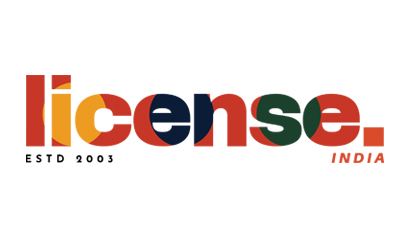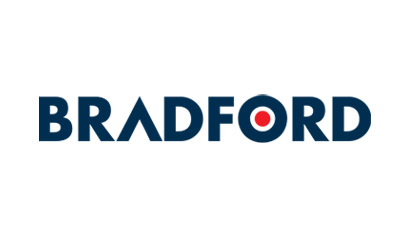To get access to over 10000+ Franchise Business Opportunities.
Network with the growing Business Community to get expert interventions to let you learn to Grow & Expand your Business with Franchising.
Dealers have evolved from mere intermediaries engaged in selling products to a significant point of connect between the manufacturing company and the customer. Read ahead to know more about this connection.
DEALERSHIP as a business model has been around for as long as we can remember. Dealers act as channels to promote sales, build reputation of a brand and contribute towards the growth of the company's market share. A dealer is able to generate the feeling of satisfaction among his potential customers, so there is more possibility of increase in sales. A dealer's location should be such that it ensures that potential customers get the best of planned advantages. It is dependent on the brand and type of product. The look and feel, ambience and the services of a dealership outlet is equally important as retail outlet to a consumer.
Dealership in two-wheelers
Automobile industry is one of the fastest growing sectors in manufacturing in India. In automobiles, two-wheeler companies hold a major share and contribute maximum in making the sector grow fast. The prominent players in two-wheelers include Hero Honda, Bajaj Auto, TVS Motor, Yamaha Motor, Suzuki, and Mahindra and as per the latest update, German-based luxury car manufacturer BMW is now going to enter into the Indian two-wheeler market with the launch of new bikes.
Bajaj Auto is one of the oldest and most popular faces of the Indian two-wheeler segment. The brand was launched in 1940s and has its manufacturing plants at Pune and Pantnagar in Uttaranchal. The company has a tie-up with dealers and loan-providers and under its own scheme of Bajaj finance, provides loans for various Bajaj two-wheelers. Hero Honda is another two-wheeler manufacturer with a market share close to 41 per cent of the total two-wheelers in India. The joint venture between the Hero Group of India and Honda of Japan, Hero Honda has a network of dealers and service centres spanning the country. TVS Motor offering a range of mopeds, scooters and motorcycles is another significant player in the Indian two-wheeler scene. Indian subsidiary of the Japanese automobile giant, Yamaha, Yamaha Motor India has limited presence in the Indian two-wheeler industry with models like Gladiator, Yamaha G5, Crux and Alba. Yamaha plans to increase its compact dealerships named 'Yamaha Bike Corner' from the present one to 250 by the end of 2011, which will help to improve its presence in tier III cities. Mahindra two-wheelers is another significant brand. After the split of Kinetic with Honda, Mahindra eventually bought over the brand.
German-based luxury car manufacturer BMW is now going to enter into the Indian two-wheeler market with the launch of new bikes in India. BMW will shortly announce the launch of new bikes in India. Motarrads, its motorcycle company, is a core BMW group firm that sees huge potential in India.
The Indian two-wheeler industry is growing fabulously. Having met the demand for two-wheelers in metros, manufacturing brands are now exploring the potential in tier II and III cities.
Expansion in fast gear
After their successful expansion in metros, the two-wheeler brands are now looking at tier II and III cities. Before embarking on expansion strategy, says Gaurav Sharma of Shaili Yamaha, Yamaha Dealer, “Two-wheeler manufacturers usually conduct market surveys to gauge the potential of the market.”
Regarding location for outlets, Sharma informs, “Well it depends mostly on the local government policies taking into consideration noise pollution and other related reasons. However, high streets, industrial areas and auto-markets are considered the best.” After successful presence in metros and urban markets, two-wheeler major Yamaha took major expansion initiative in 2010 in rural India by launching more models in the affordable price range. Dealership is undoubtedly the best bet for two-wheeler companies for strong presence.
Dealership is largely offered to aspirants with sound financial background, having space and to those who understand the two-wheeler business. A dealer provides a detailed insight into the two-wheeler functioning and the range of options, highlights financial funding options, help and encourage the customer in identifying the best possible two-wheeler and how to acquire them. A dealer in proper loop with the manufacturer can start various promotional programmers like two-wheeler for sale, zero per cent finance, exchange offers, etc. Of course, a good amount of business i.e., sales, service and spares and enhancing the brand image of the company by creating healthy business relations with the customers is what is expected from the dealers. According to Sharma, “A prospective dealer should have a good experience in automobiles. He should be financially capable to meet the company's requirements and should have a prime location in the city.”
Appointment of sub-dealers
Dealer's most significant role is the appointment of sub-dealers. Sub-dealers are largely located in rural or small town or cities. The investment range for a sub-dealer begins with Rs 10 lakh and majorly varies from company to company and area to area. Appointment of sub-dealers is carried out at the discretion of the dealers. The sub-dealers usually deposit their securities to the dealer and dealers mediate in supplying the automobiles to the sub dealers. A dealer can appoint two to 10 dealers, depending upon the demand and success rate of the product.
Training and support
Brand name is the biggest support that the company provides. Other than this, training and support is provided to the dealers and national marketing of the brand is what a dealer gets as a support. Everything else, from appointment of the staff to setting up of outlets to marketing at the local level is taken care of by the dealer. The company's training policy revolves mainly around technical training and marketing.
Word of caution
Though dealership has emerged as a rewarding opportunity but the two-wheeler dealership industry is a bit unorganised. So, aspiring dealers should carry out proper research and collect as much information as possible before investing. Also, check the need and demand of the products in the market. Personal interest and attention is the key to success.
BOX_1
Process of dealership
= Applying for the dealership in response to an advertisement in newspaper or magazine or via electronic media
= Shortlisting applicants for the interview
= Signing the dealership agreement
= Paying in advance to the manufacturing company to buy goods for the outlet
= Depositing security amount that varies from location to location
= Setting up the dealership outlet
BOX_2
Growth drivers
= Inefficient public transportation system, especially in the semi-urban and rural areas
= Easy loan availability for consumer financing
= Manufacturing of fuel-efficient and low-maintenance models
= Affordability of two- wheelers as a means of transportation
= Increasing per capita income over the past five years


Business Opportunities
Browse By Investment Range
Browse By States
Popular Cities















